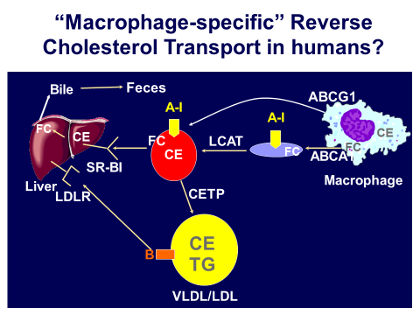Rader - Figure 15 - Applications for efflux capacity Text
This final Figure serves to highlight the fact that these assays are in vitro assays that ultimately require simply taking serum from people and looking at it in a test tube, the culture dish. Nevertheless, this approach has the potential to advance our ability to predict CVD risk, and in particular, to assess new therapies that are targeted toward affecting HDL functionality in a way that might allow us to more rationally decide which of those new therapies are the most promising and which doses are most promising to take forward into larger clinical trials.
Clearly, the most interesting question is the concept that we might be able to trace the movement of cholesterol from macrophages to the liver and the bile in vivo in people, and this would be a valuable tool that would enhance even further our ability to assess HDL function, and in particular, assess novel therapeutic interventions targeted to HDL and reverse cholesterol transport. Progress is certainly being made in developing such a method, and hopefully in the future, this will be part of our toolkit along with a measurement of cholesterol efflux capacity as a way to assess new therapeutics targeted toward the HDL system.
J Clin Lipidol. 2011; 5(6).